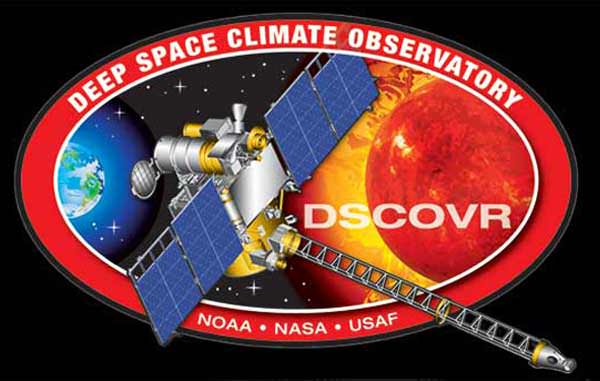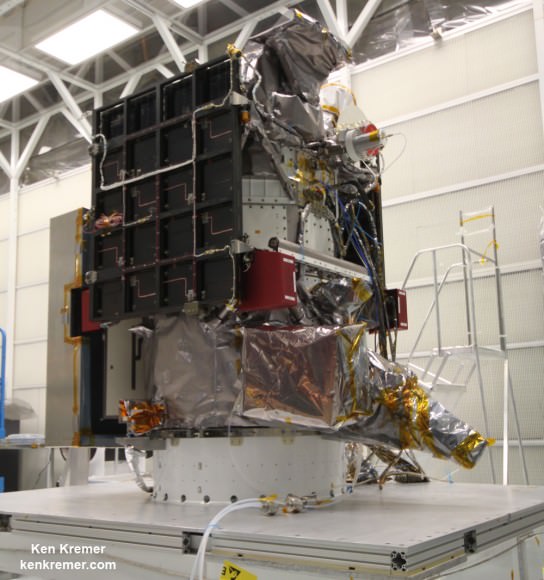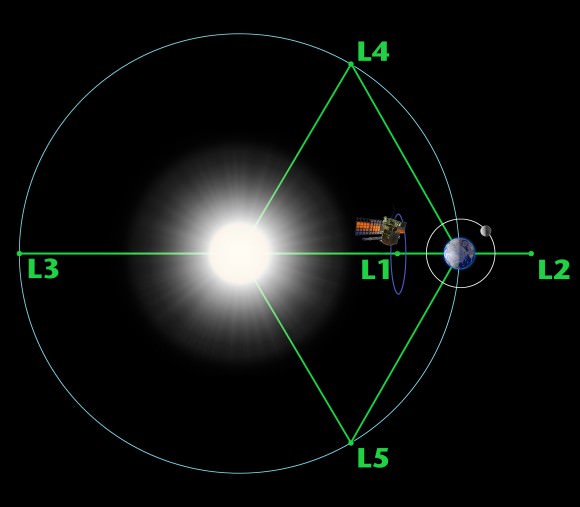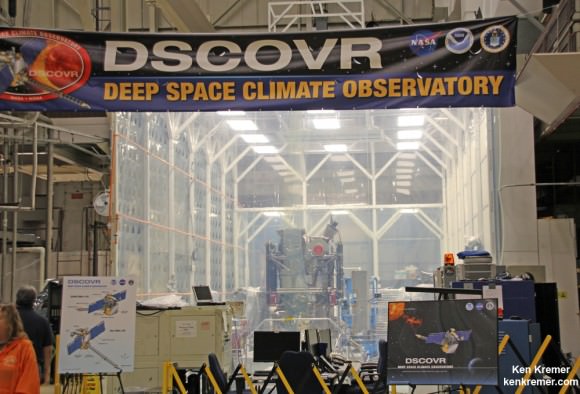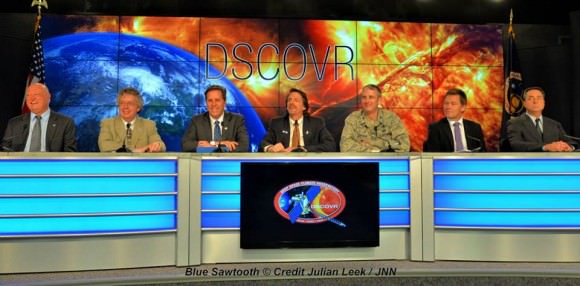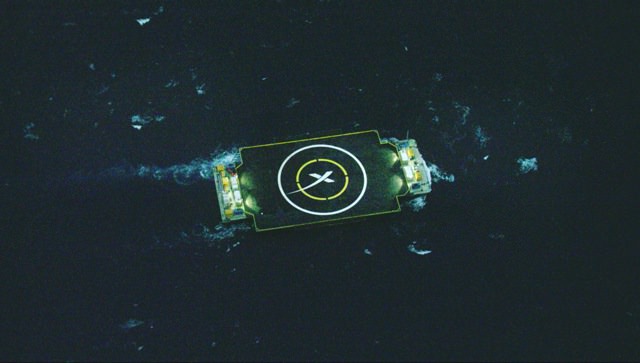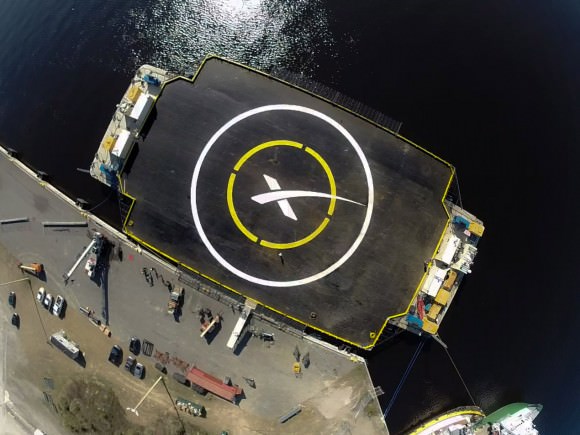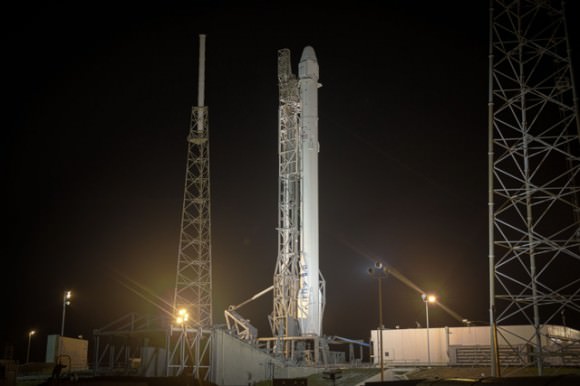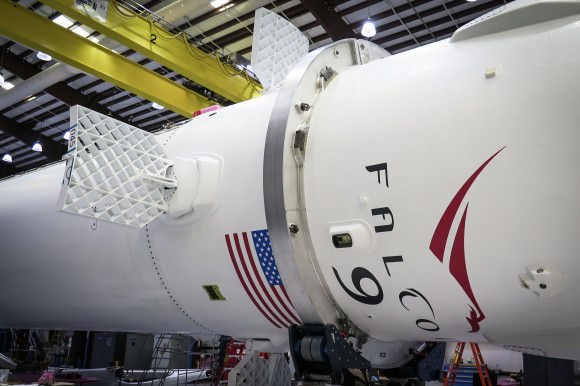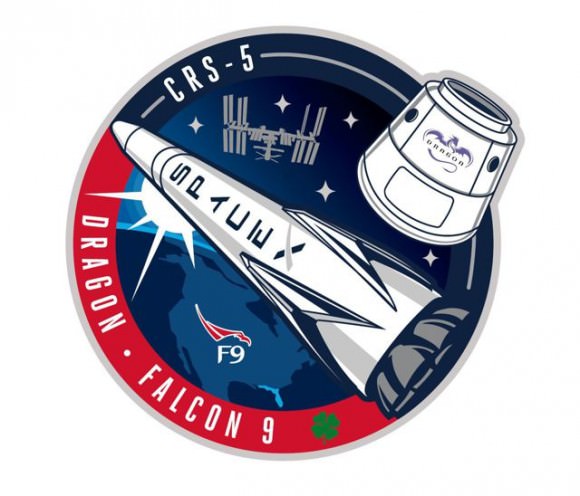KENNEDY SPACE CENTER, FL – Now just a day away, all systems are “GO” for blastoff of the next SpaceX Falcon 9 rocket carrying the Dragon CRS-6 cargo capsule on Monday, April 13, on a mission to the International Space Station (ISS) and a near simultaneous historic attempt to soft land the boosters first stage on a barge in a remote area of the Atlantic Ocean, hundreds of miles offshore from the US eastern seaboard.
In advance of Mondays launch attempt, SpaceX engineers successfully completed the practice countdown dress rehearsal and required static fire engine test this afternoon, Saturday, April 11, to ensure everything is ready with the rocket and first Stage Merlin 1-D engines for a safe and successful mission to the orbiting outpost.
The Dragon capsule has already been loaded with most of the cargo bound for the space station and was mated to the Falcon 9 booster earlier this week.
Although it is raining heavily now around the Florida Space Coast region along with multiple tornado warning threats, NASA and SpaceX officials are hopeful that weather conditions will clear sufficiently to permit Monday’s planned launch.
U.S. Air Force weather forecasters from the 45th Weather Squadron currently rate the chances of favorable conditions at launch time as 60 percent GO for liftoff of the sixth SpaceX commercial resupply services mission (CRS-6) to the ISS.
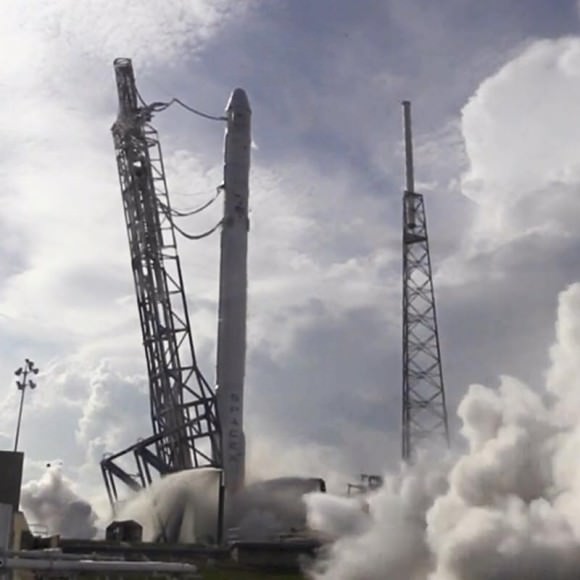
SpaceX and NASA are targeting blastoff of the Falcon 9 and Dragon CRS-6 spacecraft for Monday, April 13, slated at approximately 4:33 p.m. EDT from Space Launch Complex 40 at Cape Canaveral Air Force Station in Florida.
NASA Television plans live launch coverage starting at 3:30 p.m EDT: http://www.nasa.gov/multimedia/nasatv/index.html
SpaceX also plans live launch coverage beginning at 4:15pm EDT: www.spacex.com/webcast
The launch window is instantaneous, meaning that the rocket must liftoff at the precisely appointed time. Any delays due to weather or technical factors will force a scrub.
If all goes well with Mondays launch attempt, the Dragon spacecraft will rendezvous with the Earth orbiting outpost Wednesday, April 15, after a two day orbital chase.
In the event of a scrub for any reason, the backup launch day is 24 hours later on Tuesday, April 14, at approximately 4:10 p.m.
The Falcon 9 first stage is outfitted with four landing legs and grid fins to enable the landing attempt, which is a secondary objective of SpaceX. Cargo delivery to the station is the overriding primary objective and the entire reason for the CRS-6 mission.
The SpaceX plan is to direct the spent 1st stage on a precision guided rocket assisted descent from high altitude to accomplish a pinpoint soft landing onto a tiny platform in the middle of a vast ocean.
The ocean-going barge is known as the ‘autonomous spaceport drone ship’ (ASDS). It is being positioned some 200 to 250 miles offshore of the Carolina’s in the Atlantic Ocean along the rockets flight path flying along the US Northeast coast to match that of the ISS.
The ASDS measures only 300 by 100 feet, with wings that extend its width to 170 feet.
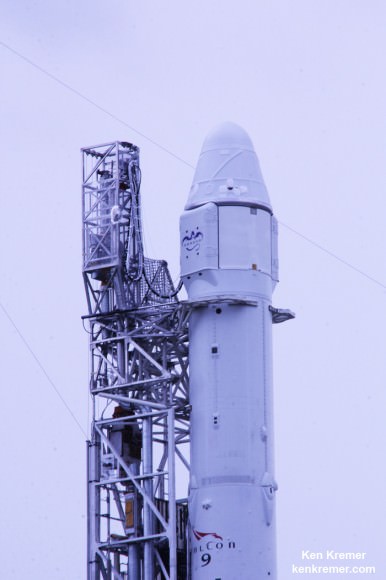
This marks the 2nd attempt by SpaceX to recovery the 14 story tall Falcon 9 first stage booster on the ASDS barge.
The first attempt in January during the CRS-5 mission was largely successful, as I wrote earlier at Universe Today, despite making a ‘hard landing’ on the ASDS. The booster did make it to the drone ship, positioned some 200 miles offshore of the Florida-Carolina coast, northeast of the launch site in the Atlantic Ocean. The rocket broke into pieces upon hitting the barge.
Overall CRS-6 is the sixth SpaceX commercial resupply services mission and the seventh trip by a Dragon spacecraft to the station since 2012.
CRS-6 marks the company’s sixth operational resupply mission to the ISS under a $1.6 Billion contract with NASA to deliver 20,000 kg (44,000 pounds) of cargo to the station during a dozen Dragon cargo spacecraft flights through 2016 under NASA’s original Commercial Resupply Services (CRS) contract.
Dragon is packed with more than 4,300 pounds (1915 kilograms) of scientific experiments, technology demonstrations, crew supplies, spare parts, food, water, clothing and assorted research gear for the six person Expedition 43 and 44 crews serving aboard the ISS.
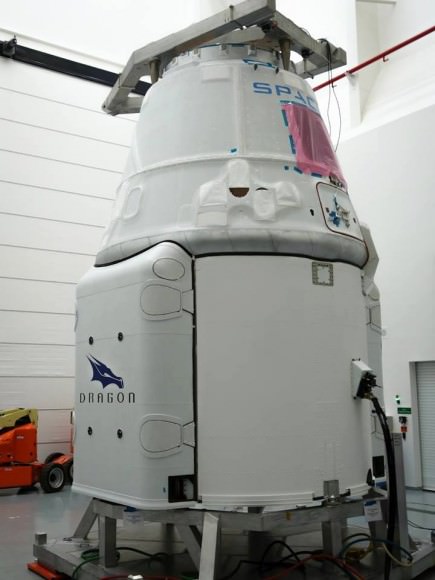
The ship will remain berthed at the ISS for about five weeks.
The ISS cannot function without regular deliveries of fresh cargo by station partners from Earth.
Watch for Ken’s continuing onsite coverage of the CRS-6 launch from the Kennedy Space Center and Cape Canaveral Air Force Station.
Stay tuned here for Ken’s continuing Earth and planetary science and human spaceflight news.
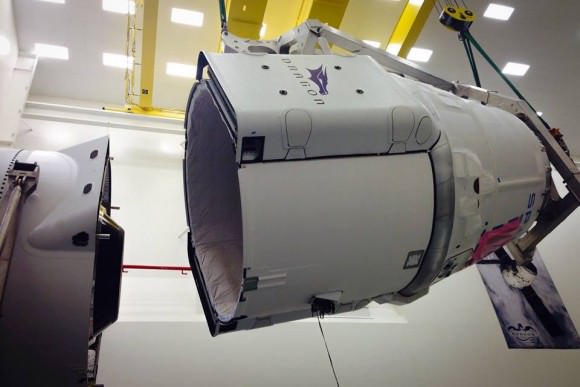
………….
Learn more about SpaceX, Mars rovers, Orion, Antares, MMS, NASA missions and more at Ken’s upcoming outreach events:
Apr 11-13: “SpaceX, Orion, Commercial crew, Curiosity explores Mars, MMS, Antares and more,” Kennedy Space Center Quality Inn, Titusville, FL, evenings
Apr 18/19: “Curiosity explores Mars” and “NASA Human Spaceflight programs” – NEAF (NorthEast Astronomy Forum), 9 AM to 5 PM, Suffern, NY, Rockland Community College and Rockland Astronomy Club


